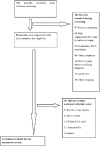Biocompatibility and sealing ability of mineral trioxide aggregate and biodentine as root-end filling material: A systematic review
- PMID: 29628640
- PMCID: PMC5852924
- DOI: 10.4103/JCD.JCD_45_17
Biocompatibility and sealing ability of mineral trioxide aggregate and biodentine as root-end filling material: A systematic review
Abstract
Introduction: This systematic review intended to compare the biocompatibility and sealing ability of mineral trioxide aggregate (MTA) and biodentine as root-end filling material.
Materials and methods: A computerized literature search was performed on March 1, 2016, in MEDLINE, PubMed, and COCHRANE LIBRARY for data published from January 2011 to March 2016. Quality assessment of the selected studies was performed according to the PRISMA guidelines, 2009.
Results: A total of 12 in vitro studies were included in this review. Of these, four studies compared the biocompatibility and eight compared the sealing ability. With regard to biocompatibility, two articles showed biodentine to be better and two showed comparable results, while in the case of sealing ability, one article showed MTA to be better, six articles showed biodentine to be better, and the rest one article showed the comparable result.
Conclusion: It may be concluded that good sealing ability of biodentine along with its favorable biological properties show that materials can be used competently in clinical practice as a retrograde filling material. However, long-term assessment in clinical situations is necessary for further inferences.
Keywords: Biocompatibility; biodentine; in vitro studies; mineral trioxide aggregate; root-end filling; sealing ability.
Conflict of interest statement
There are no conflicts of interest.
References
-
- Papancheva TB, Panov V, Peev S, Papanchev G. Root End Filling Materials-Review. Scripta Scientifica Medicinae Dentalis. 2015;1:9–15.
-
- Parmar J, Choksi D, Idnani B. Root end filling materials: Review literature. Heal Talk (A Journal of clinical dentistry) 2014;6:32–4.


